
LED grow lights are trending this year, being searched for online more than HPS and other grow lights. If you haven’t seen the HPS vs. Electric Sky LED side-by-side indoor grow timelapse yet, I suggest you take a look at this video.
New Wideband Spectrum LEDs
Not your typical LED grow light, the Electric Sky LED grow lights featured above use patent-pending GS1 Wideband Spectrum technology. The secret is near-infrared light that activates the “Emerson Effect” in plants, combined with photomorphogenic changes in the leaf so that leaves get bigger and capture more light.
A forewarning:
These new wideband spectra LED grow lights are not cheap. Their flagship Electric Sky 300 LED grow light, dubbed ES300 (shown in timelapse), costs $695 at the time of writing.
For the serious high yield cash cropper, these not-so-cheap LED grow lights will pay for themselves and more in a short time. If you can spare the cash, go for it.
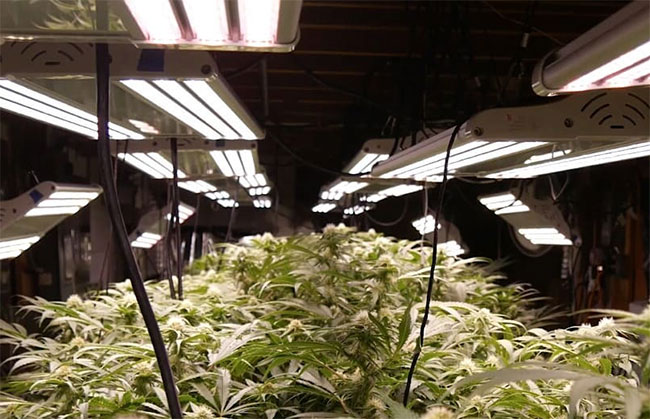
A key difference between the Electric Sky LED grow light, and other grow lights is the lenses. The ES300 uses unique linear lenses (instead of circular) combined with a distributed LED layout to shine light efficiently into even the deep corners of your grow room.
Also unique to the Electric Sky LED grow light is its wideband spectrum.
The ES300 grow light utilizes near-infrared light (680nm–720nm range)
Why use near-infrared light?
If you’ve bought LED grow lights before, you’re probably aware of what PAR is. Much like the visible spectral range of light humans can “see”, PAR (wiki), short for Photosynthetically Active Radiation, is the spectral range of light that plants can “see” (use in photosynthesis “to grow”).
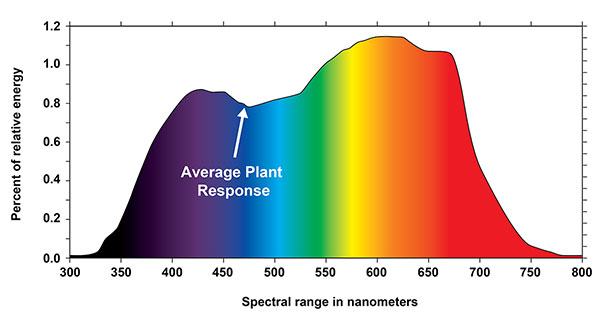
The PAR spectral region runs from 400 to 700 nanometers. This is the light that plants use to grow. The graph above represents a plant’s response to one color at a time. E.g., this graph was created by flashing a plant with blue (400nm) and taking a measurement. Flashing a plant with blue again but (401nm), and taking a measurement.
However, an American scientist Robert Emerson discovered a significant secret…
The Emerson Effect

The secret that Emerson found is that colors have a symbiotic effect when a plant experiences both, so the “PAR” graph is just a general idea of the effectiveness of a color. Plants look for more than one color, which is why they love a full spectrum of light.
What Mr. Emerson discovered is that plants would increase their rate of photosynthesis (grow faster) while exposed to different wavelengths of light simultaneously- one at 680 nm (deep red spectrum) and another at approximately 700 nm (far red, near-infrared) (wiki). But this growth increase was only present when both the red and far red, near-infrared wavelengths were combined.
The Electric Sky LED grow light (ES300) features patent-pending GS1 Wideband Spectrum technology that focuses in on this red and far red, near-infrared “hot growing” range:
Red Wideband Diode:
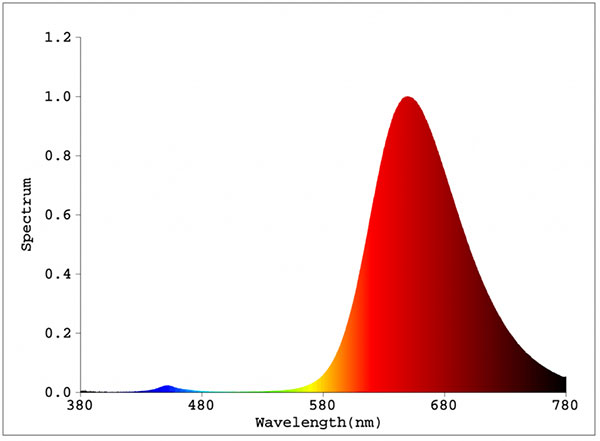
Electric Sky LED Grow Lights utilize the Emerson Effect with red wideband diodes (along with others) in a special spectrum optimized for plant performance.
Electric Sky LED Grow Light (ES300) Overview
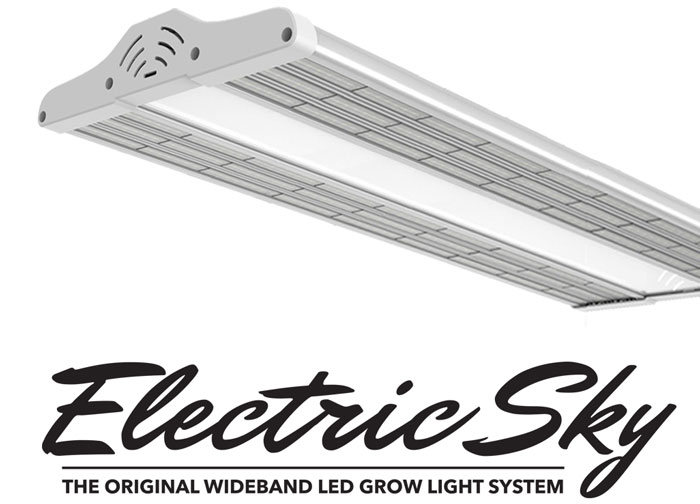
| Spectrum: | GS1 Wideband Spectrum |
| Compares to: | 2x ES300 to Replace a 1000W HPS |
| Recommended Area Per Light: | Up to 2.5’ x 5′ per Light |
| Voltage | 100-277V |
| Size / Weight | 36L x 12W x 4.6H in / 22lbs |
| True Power Draw | 300W |
| Photon Efficiency (300nm-780nm) | 2.0 Umol/J** |
| US Laboratory Tested Certification | ETL Listed for Safety in Damp/Dry Locations Eligible for Energy Rebate |


How many LED grow lights do I need?
Answer: For high-quality grow lights, including the Electric Sky, you need as many as will fit your space, at least 90 watts for every 2×2 area. For lower quality grow lights, refer to the “true” not advertised wattage, and use at least 150 true watts for every 2×2 area.
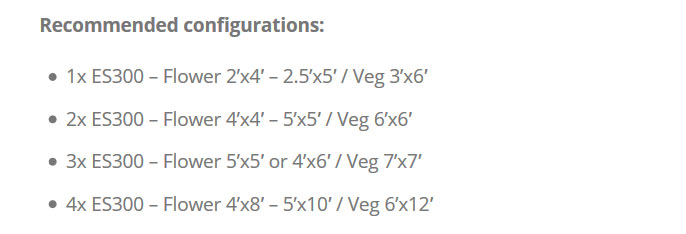
How should I set up my LED grow light?
Answer: Generally speaking, if an LED grow light is “compact” or has circular lenses, you’ll want to keep it further away. The wider or longer the unit is, the closer you can keep it to your plant canopy. The idea is, you want light coming from many angles to your plants, so multiple units or wider single units offer a more uniform light environment for your plants.
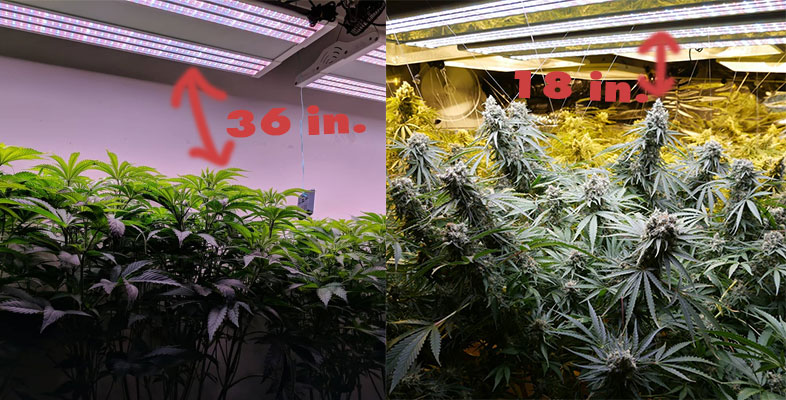
Recommended distance of light from plant canopy
Answer: Under the Electric Sky LED grow light, seedlings and vegetating plants are recommended at 36 inches (91 cm) from the light. Flowering and maturing plants, however, can be 18 inches (46 cm) from the light.
How will I know if my LED grow light is placed too close to my plants?
Answer: Leaves will burn and yellow when too close under some manufacturer’s LED grow light. Foliage under circular lens bulbs often has to be placed 20 inches or more away from the light.
However, the Electric Sky LED grow light is built with unique linear lenses that allow for closer placement of leaves and plant foliage. Still, growers will want to consider the total light distribution – placing plants directly under the LED bulbs in your grow room may not provide the light spread you need.
Do I need a grow tent / ventilation fan to use LED grow lights?
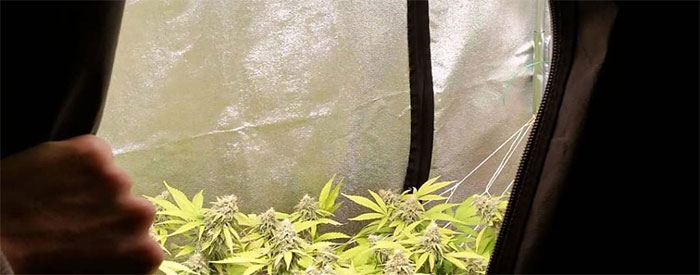
Answer: You don’t need a grow tent, but it is recommended to use one to keep both light and heat inside. LED lights work best when the temperature is about 80°F (27°C) or higher.
Why is the true power draw different from the advertised wattage in a LED grow light?
Answer: The true power draw of a light is what you should look for. The advertised wattage for many LED grow lights usually means nothing, and it is only there to grab your attention. Note that wattage is not enough to understand how much light is coming out of an LED, “umol/J” is the only measurement you should look for. A good LED light is 1.5+ umol, high quality LED will be 1.8–2.2 umol.
Electric Sky ES300 = 300W true power draw .Do LED grow lights work good for growing seedlings?
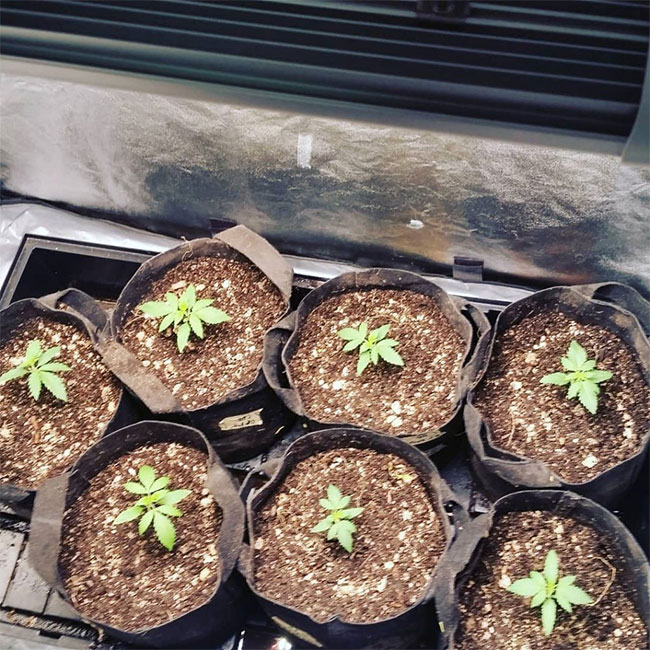
Answer: LEDs are great for seedlings, but care must be taken that they are placed far away to start, at least 36-48”, even though the lights are cool.
Will cannabis buds get dense and yield heavy under LEDs?
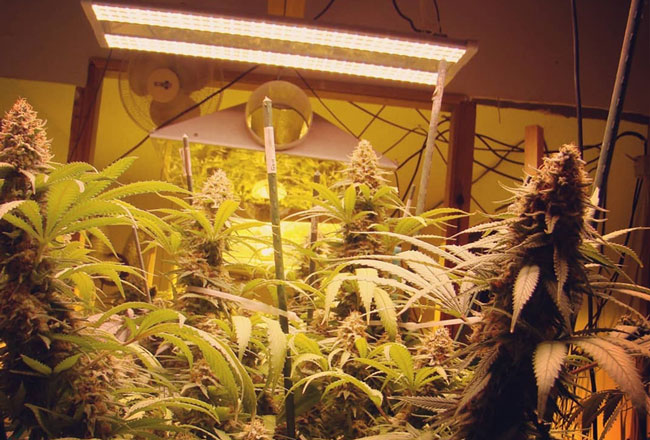
Answer: Yes! Yields can be especially high when growing under the latest technology of LEDs, resulting in dense buds and heavy yielding harvests. Using an effective LED grow light can yield the grower over .5 g/watt true power draw.
As an estimate let’s take an LED grow light that has a 300W true power draw and do the math: 300(w) x .5(g) = 150 (g) or 5.3 ounces.
Growing plants under efficient LED grow lights, utilizing high yield strains, and ensuring optimal nutrient availability are other yield-focused considerations.
Do SCROG and SOG techniques work well with LEDs?
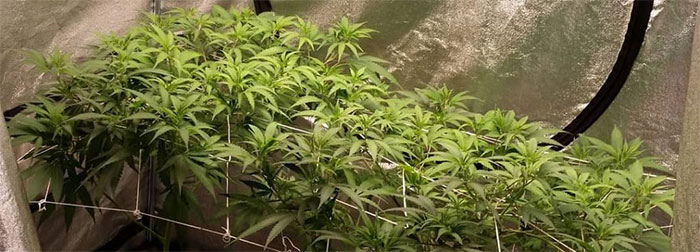
Answer: Yes! With narrowband LED (purple appearance), it is recommended to have a shallow canopy. With more full-spectrum LEDs, larger plants can be grown because of better canopy penetration.
Will any blue and red LED lights work to grow plants?

Answer: Plants can survive with almost any color of light: blue, green, yellow, orange, and red. Older LED systems could only create red and blue light efficiently, which happens to work pretty well for plants. Full-spectrum lights, however, give plants more of a spectrum like the sun, and in most cases, outperform “narrowband” spectrums due to an equal distribution of color from blue, to green, to red.
Do I need to adjust the spectrum for flowering plants / vegetating plants?
Answer: Adjusting the spectrum is not necessary between flower and vegetative. Generally speaking, the more red a spectrum has, the faster plants will grow.
Are LED grow lights safe for humans?
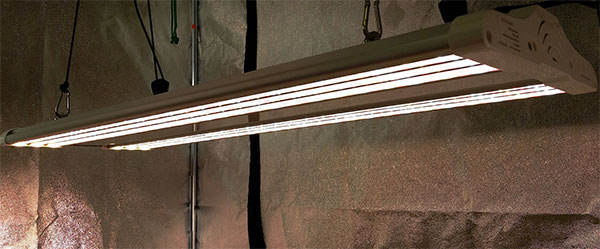
Answer: LED grow lights are very safe for humans because they contain much less UV light than conventional lights. Eye protection should always be used, however, when working under LED lights.
Are LED grow lights good for hydroponics?
Answer: LED grow lights are ideal for hydroponics, especially because they will reduce the amount of evaporated water and need to cool the water, greatly saving energy costs.
Are LED grow lights good for growing other plants besides cannabis?
Answer: LED grow lights are good for growing all types of food from lettuce, radish, leafy green, tomato, pepper—anything that you can fit in a grow tent!
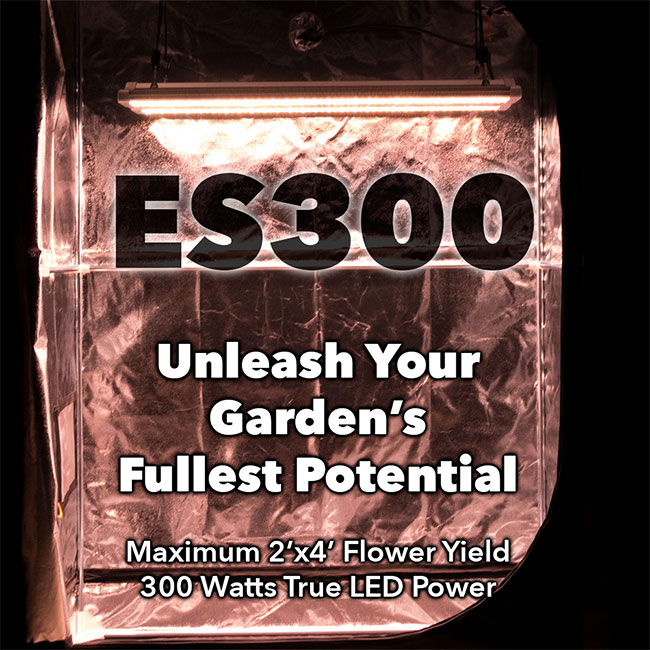
Last chance! Buy direct for best price.
Disclaimer: We do not promote or undertake in illegal activity.


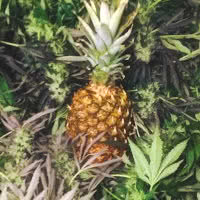
I am currently finishing my first grow. I ran hps vs es300’s. All clones from same mother. Same everything. Not even close. Es 300’s way out performed hps.
I run Electric Sky 300s and wow the wideband spectrum is amazing, it grows the plants bigger, leaves, stems, size, everything, but I still get tight internodal spacing it works wonders and I’ve grown with those other white LEDs before and they just missing something don’t sleep on the ES300s
I have run Stealth Grow 600 watt blue spectrum LED, for my veg, then switch to the Stealth Grow 600 for flower I use three of these panels on a Sun Revolution light mover 120 SQ.Ft. room got 4 lbs. was an ok yeild good finished product.
Then I got 4 Phantom DE 1000 watt Lights. I ditched the HPS bulbs Got 10,000 watt Kelvin, blue spectrum for veg and the first two weeks of flower. Then I drop two of the Blues out and put the HPS and turned down the wattage on the reds to 825 watt output from 1125 watts per light, Sweet Spot ! I keep my A/C at 68 degrees with steady humidification at 60 percent constantly. This steup aqllowed me to increase my yeild to 6 lbs per run. Purple Kush, Bruce Banner and 1 Trainwreck. I do three runs a year. It is damn hard work and electricity isn’t cheap, but the satisfaction of producing Your OWN medicine is gonna make life just a bit Sweeter. I love my job